The future perfect continuous tense is used for actions that continued up to a point in the future.
A proper implied or explicit context is necessary when using this verb tense.
The future perfect continuous is commonly used to describe:
-
the duration of an action up to a certain point in the future
-
the cause and effect an action will have on a future action
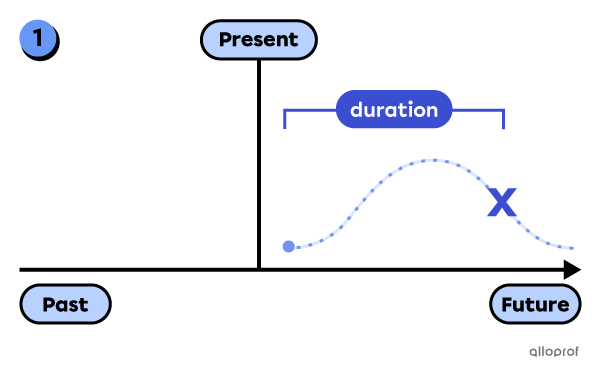
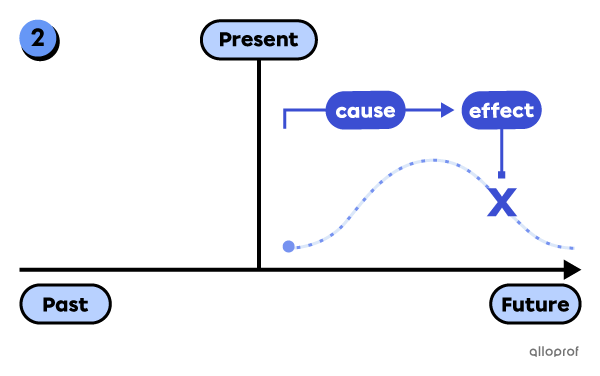
-
The duration of an action up to a certain point in the future
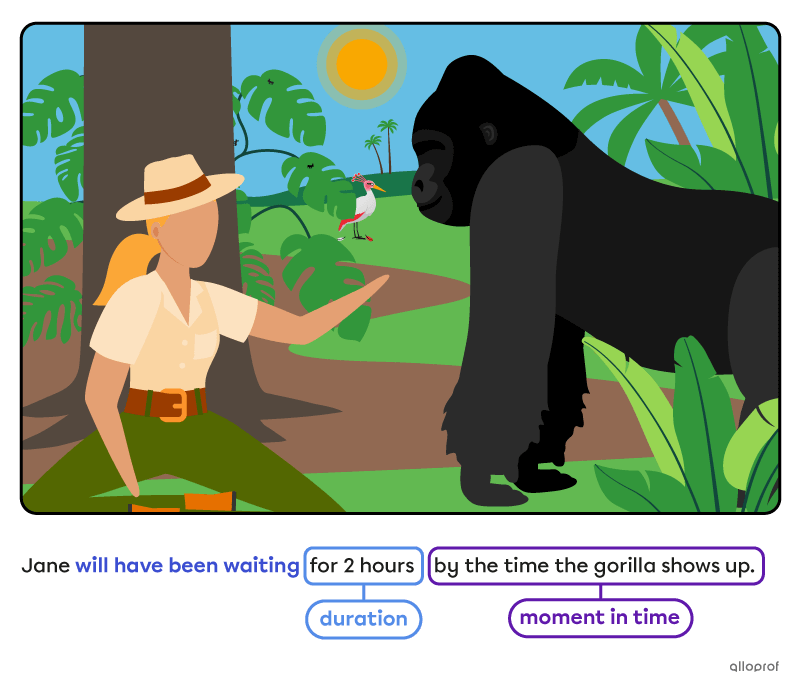
-
The cause and effect a future action will have on a future action
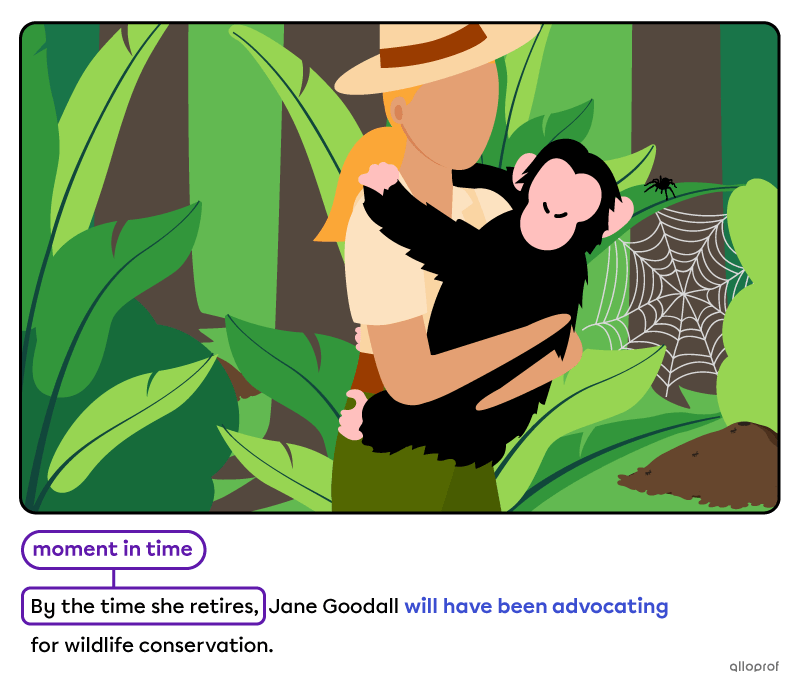
It implies that her actions have already left quite a mark on wildlife conservation around the globe.


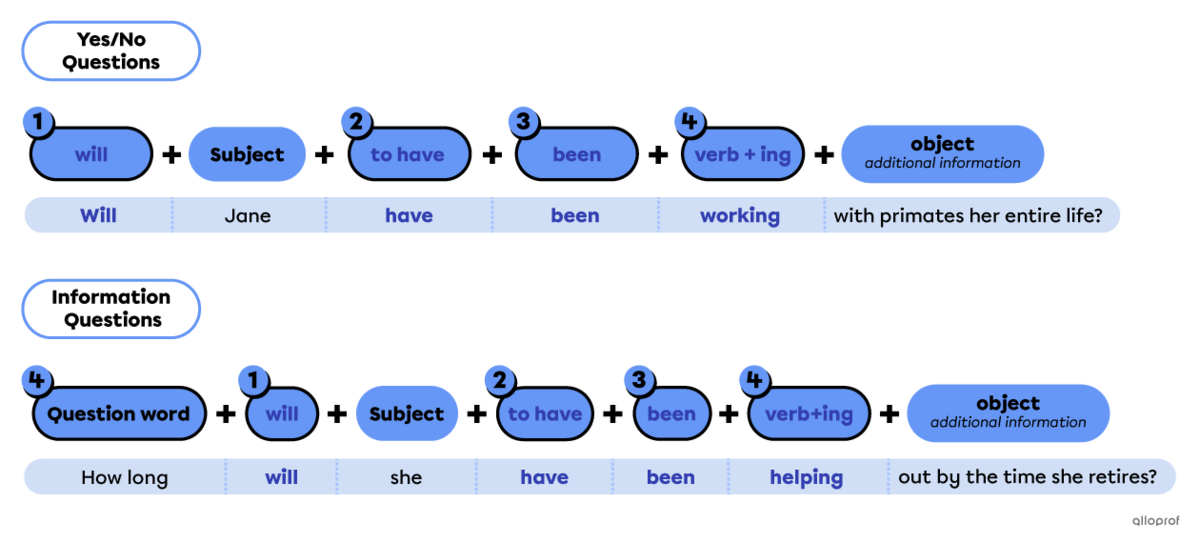
Using the future perfect continuous verb tense usually requires a proper implied or explicit context.
There are differences between the simple future, future perfect, future continuous or the future perfect continuous.
Here are some examples to show possible uses and differences between each future tense.
Jane will build a habitat for the primates tomorrow.

The action, build, will occur tomorrow, without specifications as to how long or when exactly.
Jane will have built a habitat before digging a moat.

The action, build, will be completed before digging a moat in the future.
Jane will be building a habitat when the visitors arrive.

The action, build, will be ongoing during a specified period of time tomorrow.
By 4 p.m., Jane will have been building a habitat for more than 2 hours with her partner.

The action, build, will have been ongoing for more than 2 hours by a specified moment in time.
The examples used in this page were inspired by Dr. Jane Goodall, who spent most of her life as conservationist, humanitarian and crusader for the ethical treatment of animals. To learn more about her, visit this website.